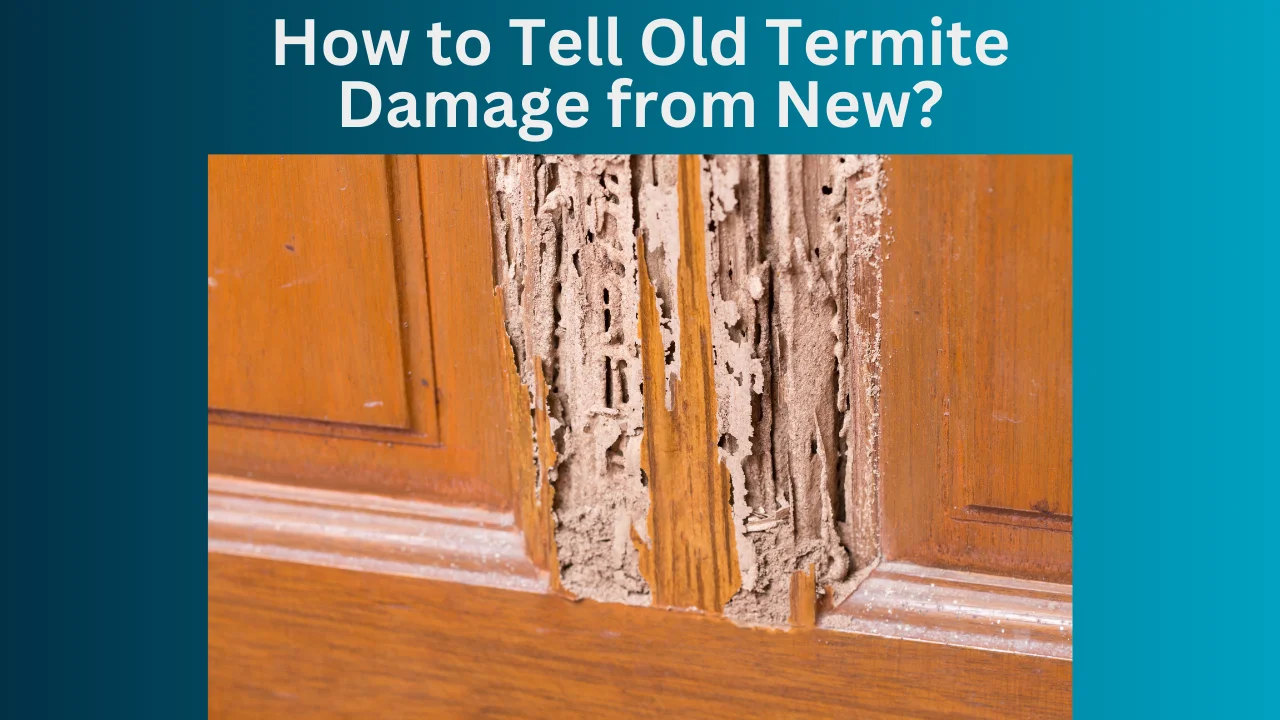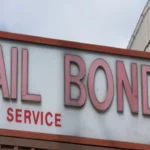Damage from termites can be substantial, so it’s important for homeowners, inspectors, and exterminators to be able to tell the difference between termite damage that’s been there a while and damage that’s more recent. If you know how old the damage is, you can gauge how bad the infestation is and what to do about it. Read on for specifics on how to tell the difference between termite damage that is a few years old and new, how to tell old termite damage from new? as well as other telltale signs.
If not dealt with quickly, termite damage can cause serious structural problems and expensive repairs, making it a real nightmare for homeowners. In order to assess the problem’s severity and formulate a suitable response, it is crucial to know if the damage is recent or older. In order to effectively detect and distinguish between old and new termite damage, this article seeks to provide you with the necessary knowledge.
Purpose of This Article
Termite damage assessment and repair is the focus of this article, which is intended for readers who are homeowners, property managers, pest control experts, or home inspectors. Knowing the difference between old and new termite damage is essential whether you’re trying to assess the severity of an infestation or if you’re looking to buy a property.
Identifying Old vs. New Termite Damage
Color and Texture
1. Old Termite Damage
Because termite damage from the past has been exposed to light and air for so long, it often looks weathered and darker. The wood might seem weathered, dry, and brittle. The afflicted regions may also become more weathered as time passes due to the accumulation of dirt and dust.
2. New Termite Damage
Termite damage that is relatively new, on the other hand, is often paler and may still be somewhat pliable. Wood that has recently been damaged may have a lighter, more natural tone and seem clean and unweathered. Wood that has recently been chewed by termites is less fragile and more intact, so the texture can be a big clue.
Presence of Termites and Mud Tubes
1. Active Infestation Indicators
The discovery of newly formed mud tubes or live termites is highly suggestive of recent activity. In order to keep themselves and their habitats moist and safe from predators, termites construct mud tubes. You can tell there’s activity in a fresh tube because it’s usually wet and unbroken.
2. Signs of Past Activity
Empty galleries and wood that has dried out are often the only visible evidence of termite damage that is several years old. It is possible that the infestation has been treated or is no longer active, given the lack of live termites and the decaying, fragile mud tubes.
Structural Integrity
1. Fresh Damage Impact
Although the wood’s structural integrity is diminished, it may still be able to support some weight due to more recent damage. Even though it has been damaged by the recent activity, you can still see that the wood has some of its original strength and structure.
2. Old Damage Consequences
The wood’s strength is usually severely diminished by older damage. The afflicted regions lose their ability to sustain weight or endure pressure as time goes on, becoming increasingly brittle and delicate. Hollow sounds, when tapped on, indicate significant internal erosion in these areas.
Frass and Wood Debris
1. Fresh Frass
Termite droppings, or fresh frass, look like little pellets of wood-colored material and may be present in newly-discovered damage. Often discovered close to newly damaged areas, fresh frass shows signs of active feeding and recent infestation.
2. Absence of Frass
Older damage typically does not have any traces of frass. After some time has passed, the termites may have cleaned up or scattered the frass and wood debris, leaving behind only the hollowed-out galleries.
Moisture Levels
1. Dampness in New Damage
If the infestation is active and the area is close to a source of moisture, new damage might feel wet. The termites’ preferred habitat is damp, and the damaged wood usually has higher moisture levels due to recent activity.
2. Dryness in Old Damage
Usually, old damage isn’t wet. As the infestation fades away or is treated, the wood dries out and becomes brittle due to the decrease in moisture levels.
Crucial Signs of Termite Infestation Visual Dissimilarities by Age
1. Color Variations
The color is one way that termite damage can be identified as either new or old. As previously said, fresh damage is often lighter in color, whereas older damage darkens and looks more worn.
2. Structural Cues
You can tell how old the damage is by looking at the wood’s structural integrity. While wood that has recently been damaged may retain some strength, wood that is decades old is usually much weaker and more brittle.
Presence of Termites and Tubes
1. Active vs. Inactive Signs
Living termites and undamaged, damp mud tubes are signs of recent activity. In contrast, the fact that termites aren’t present and the tubes have decayed indicates that the damage is quite old.
2. Examination Techniques
To differentiate between new and old damage, carefully examine the wood for indicators of live termites and the state of the mud tubes.
Sound and Feel
1. Tapping for Hollow Sounds
The amount of internal erosion can be revealed by tapping on the impacted areas. Because termites eat away at building materials from the inside, older damage often sounds hollow.
2. Texture Differences
Insights can also be gained by feeling the wood’s texture. In contrast to the dry, crumbly texture of older damage, new damage is supple and easy to handle.
Moisture Content
1. Active Infestation Moisture Levels
Because termites require a damp environment to thrive, newly damaged areas typically have higher moisture levels.
2. Dry Conditions of Old Damage
As termites become less active with time, the wood’s moisture levels drop, leaving it dry and brittle. This is a common consequence of old damage.
Why Differentiating Damage Age Matters
Treatment Planning
In order to devise effective treatments, it is essential to determine if the termite damage is recent or old. The time to act is now for active infestations, but for older damage, it may be sufficient to just make repairs and take preventative measures.
Property Value Assessment
If you’re a real estate agent or homebuyer looking to negotiate a price reduction or repair for termite damage, knowing how old the damage is is crucial.
Preventive Measures
To effectively implement preventive measures, it is helpful to differentiate between old and new damage. To better direct future inspections and upkeep, it is helpful to have a record of termite activity.
Safety Concerns
Risks to safety can be posed by severely damaged structures. Recognizing previous damage allows for the restoration of structural integrity, which in turn reduces the likelihood of collapses or accidents.
Common Questions
What are the Signs of Old Termite Damage?
Old termite damage typically appears dark, weathered, and dry. The wood is brittle, and there are often no signs of live termites or fresh frass. Tapping on the wood may produce a hollow sound due to extensive internal damage.
How Can You Distinguish Between New and Old Termite Damage?
Distinguishing between new and old termite damage involves examining the color, texture, presence of live termites or mud tubes, structural integrity, and moisture levels. New damage is lighter, softer, and may have live termites or fresh frass, while old damage is darker, dry, and brittle.
How Do I Know if Termite Damage is Recent?
Recent termite damage is characterized by light-colored, softer wood, the presence of live termites or fresh mud tubes, and fresh frass. The wood may also feel damp if the infestation is active and near a moisture source.
Can You Tell the Age of Termite Damage?
While it can be challenging to determine the exact age of termite damage, key indicators such as color, texture, structural integrity, and presence of termites or frass can help estimate whether the damage is old or new.
What Does New Termite Damage Look Like?
New termite damage appears lighter in color, softer in texture, and may include fresh frass and moist mud tubes. The wood might still have some structural integrity, and live termites may be present.
Conclusion
Treatment efficacy, property value evaluation, and preventative measures all depend on being able to distinguish between old and new termite damage. How To Tell Old Termite Damage From New? Homeowners and professionals alike can determine the exact age of termite damage by looking at structural integrity, moisture levels, color, texture, and the presence of termites. In addition to helping with the present problems, knowing these distinctions can help with avoiding infestations in the future and keeping the property safe and sound.

Shannon Reyes is a seasoned writer with a knack for crafting engaging blogs on a variety of service industries, including plumbing, cleansing, moving, pest control, and roofing. With a keen eye for detail and a passion for helping readers navigate complex topics, Shannon brings her expertise to life through informative and accessible content.










